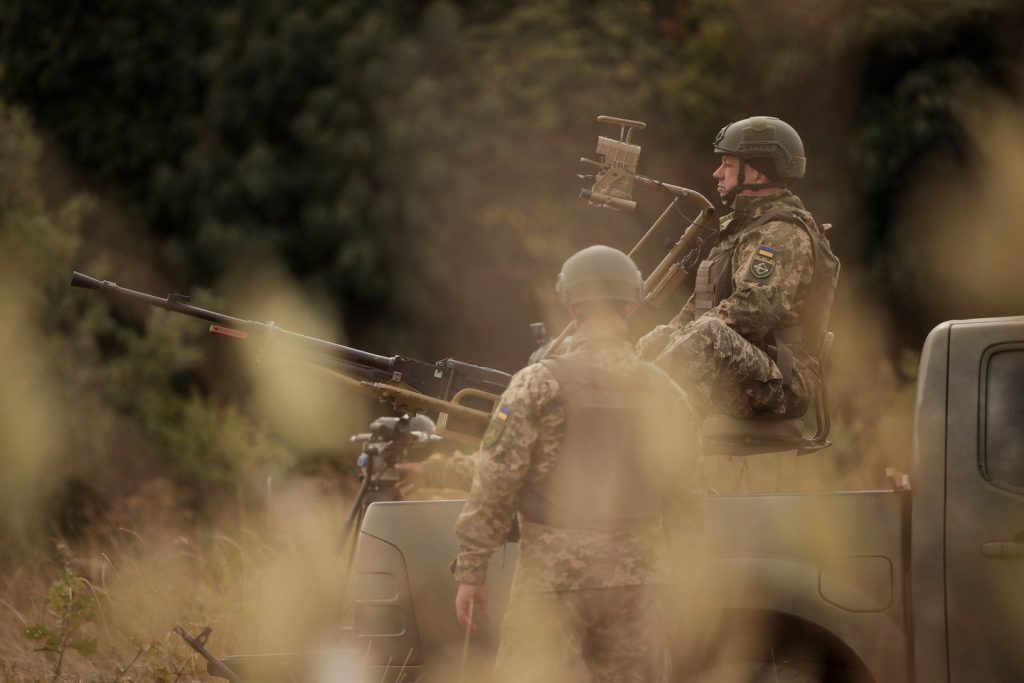Relationship between environmental loss and war

Photo credit X Ukrainian President Volofymyr Zelenskyy
By Baijayanti Rout
Raipur, October 18: The environmental impact of wars varies widely. Some international military confrontations are brief but devastating. Some civil wars can span decades while being fought at a low level.
Many modern battles have blurred the borders, lasting years yet characterised by persistent periods of high intensity combat. The environmental impact of a battle is heavily influenced by who is fighting, where they are fighting, and how they are fighting. High-intensity wars necessitate and use enormous amounts of fuel, resulting in large CO2 emissions and contributing to climate change.
Large-scale vehicle movements, as well as the intense use of explosive ordnance, can cause severe physical harm to sensitive landscapes and geodiversity. The use of explosive weapons in urban settings generates massive amounts of debris and rubble, which can pollute the air and land.
Damage to light industry and ecologically sensitive infrastructure, such as water treatment plants, can also produce pollution. The lack of energy supply might have environmental ramifications, such as shutting down treatment facilities or pumping systems, or it can lead to the usage of more polluting fuels or household generators. When industrial, oil, or energy facilities are actively targeted, mistakenly destroyed, or disturbed, severe pollution events can occur.
Attacks against oil or industrial facilities are sometimes used as a weapon of war to contaminate wide areas and cause panic. Other scorched earth practices include destroying agricultural infrastructure such as canals, wells, and pumps, as well as burning crops. Such tactics jeopardise food security and livelihoods, making rural populations more vulnerable.
These large-scale pollution episodes, whether unintentional or intentional, can have transboundary consequences due to air pollution or poisoning of rivers, aquifers, or the sea. In some cases, they have the capacity to influence weather or global climate. Weapons and military equipment have used in battles which leave environmental traces.
Land mines, cluster bombs, and other explosive remains of war can obstruct agricultural land access while also polluting soils and water supplies with metals and harmful energetic elements. Large amounts of military scrap may be created or abandoned after significant conflicts; this can contain a variety of toxic compounds, poisoning soils and groundwater and exposing persons who work on it to acute and chronic health concerns.
Wrecked or destroyed ships, submarines, and offshore oil installations can pollute the sea. Many wars include human relocation. Camps for refugees and internally displaced peoples can have significant environmental impacts, especially if they are unplanned and lack necessary amenities such as water, sanitation, and waste management. Their location is particularly crucial since camp occupants may be forced to consume local resources such as firewood, putting local resources under strain.
People displaced by violence may also relocate domestically to metropolitan areas, expanding the population and straining local environmental services. Many conventional weapons include hazardous ingredients, and some, like depleted uranium, are also radioactive. Incendiary weapons, such as white phosphorous, are not only poisonous, but they may also cause environmental harm through fire. Despite being prohibited presently, the extensive use of chemical defoliants harmed population and ecological health in huge parts of Vietnam.
Access to small guns and light weapons can affect wildlife by encouraging greater hunting and poaching, and conflict-created ungoverned zones provide excellent circumstances for wildlife crime. Weapons used in wildlife crime have been discovered to have originated in war zones. Scientists and researchers may be unable to reach some locations due to security concerns, jeopardising conservation efforts. National parks and protected areas may lose some of their protection or find it more difficult to defend them, while poachers are armed.
These circumstances can lead to more militarised conservation, which can harm connections with local populations. During wars, deforestation typically rises. Many times, this is due to overharvesting by populations who have become overly reliant on wood and charcoal for fuel and warmth. However, it might also be the consequence of armed or criminal groups taking advantage of management system failure. Civilian coping mechanisms may also result in overharvesting of other natural resources or ecologically harmful practises such as artisanal oil refining. In some circumstances, community-based sustainable resource management systems may be interrupted.
Many wars include human relocation. Camps for refugees and internally displaced peoples can have significant environmental impacts, especially if they are unplanned and lack necessary amenities such as water, sanitation, and waste management. Their location is particularly crucial since camp occupants may be forced to consume local resources such as firewood, putting local resources under strain. People displaced by violence may also relocate domestically to metropolitan areas, expanding the population and straining local environmental services.







